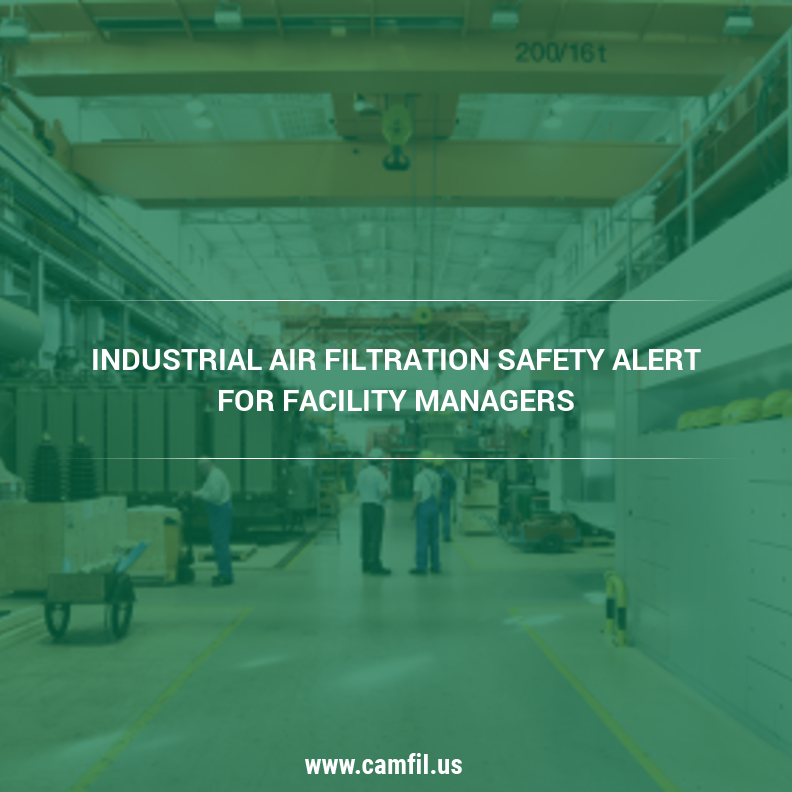Industrial Facility Manager Air Filtration News — Working in an industrial environment can be a challenging occupation. The machines used in today’s manufacturing facilities can cause serious injury if proper precautions are not taken. While all workers need to be properly trained on how to avoid accidents, one group of workers particularly at risk of injuries is the maintenance staff.
The maintenance staff interacts with every facet of an industrial facility so they are more likely to encounter dangerous situations. Not only are they often tasked with maintaining machines on the production floor, but they are also responsible for keeping the building envelop operating at peak efficiency. That responsibility brings them into contact with electrical wiring, plumbing, mechanical, air filtration and any HVAC equipment.
It is difficult to track injuries solely to the maintenance staff, and the practice of hiring outside vendors certainly complicates the matter. One study showed while making up only six percent of total employees, maintenance personnel accounted for 20 percent of the reported accidents. Of those, after transportation-related incidents, the number one cause of injuries in an industrial environment was due to falls. That statistic should be of particular concern to the maintenance staff because one job they regularly perform and puts them into close proximity of the roof’s edge is changing the air filters.
Challenges of Changing Air Filters for Industrial Facilities
As an air filter collects dirt, the air has a harder time flowing through the high efficiency filter. This increase in resistance between the front and back of the filter can be measured with magnehelic gauges and is referred to as pressure drop. As the pressure drop increases, airflow into the facility decreases.
In some cases, this only results in discomfort as the temperature inside increases or decreases depending on the weather outside. In other cases, restricted airflow may create a negative pressure situation inside a clean process production facility such as a food production or pharmaceutical plant. When this occurs, a low air alarm will signal that dangerous airborne pathogens which are normally unable to penetrate the positive air pressure inside a building, are now drawn under doorways, open windows or unseen cracks in the building.
One solution to low air alarms is to immediately replace the high efficiency air filters in an attempt to restore the proper airflow. If the timing happens to coincide with a winter storm which has left a layer of snow and ice over every surface on the roof, that is no reason to delay; airflow must be restored. It’s been established that while workplace injuries are slightly higher during summer months, fall injuries are far more common during winter months.
While weather-related risk can’t always be controlled, you can take steps to reduce the likelihood of the weather playing a greater role in causing accidents when it comes to changing out commercial air filters.
As stated before, when a filter captures dirt, pressure drop increases and eventually reaches a point where the filter must be changed. However, there is a wide range in performance characteristics between high efficiency air filters. One style of filter may reach a high pressure drop within one to three months for example, while another style may be capable of maintaining the specified airflow for six or even twelve months. This allows the maintenance staff to time the likely changeout during more favorable conditions.
High Efficiency Air Filters for Industrial Facilities
Camfil’s Food and Beverage Segment Manager Mark Davidson says “I’ve seen several large food plants go from changing prefilters every month to every six months. They adjusted the changeout schedule to spring after the heavy planting season in nearby agriculture fields and six months later before the heavy snows begin.”
There’s another benefit of higher performance filters. In some cases, large air handling units use three stages of air filters. A first stage low efficiency prefilter, an intermediate stage with a capture efficiency slightly higher and finally, a final filter with the highest capture efficiency to clean the air just prior to entering the plant.
By using an extender surface area pocket filter with a capture efficiency sufficient to act as an intermediate filter, the first stage prefilter can be eliminated. That not only reduces regular changeouts in challenging and dangerous weather conditions, but it also reduces the number of filter boxes that have to be transported up ladders, across crowded rooftops or near the roof’s edge.
Camfil Regional Manager Rick Brundage points out “This particular customer was able to consolidate two filter stages which consisted of pleated panel filters and heavy rigid box style filters to a single stage consisting of lightweight and easily carried pocket filters while improving overall filter performance. Not only did the maintenance staff appreciate the cleaner air inside the plant, they didn’t miss carrying heavy metal filters during winter.”
Maintaining the commercial air filtration equipment and building systems inside a facility is always going to be a challenging job for a facility manager and maintenance staff. It takes dedicated and talented people to keep everything running smoothly. Taking steps to lessen the potential of workplace accidents in industrial facilities, while giving employees the tools to succeed is a win-win for everyone involved.
Find more clean air solutions for Industrial Facilities by visiting our Camfil USA Clean Air blog.
Mark Davidson – Food & Beverage Segment Manager
Email : Mark.Davidson@Camfil.com
Camfil USA
Sources:
- https://www.osha.gov/oshstats/commonstats.html
- https://ohsonline.com/Articles/2017/11/01/Prepare-Now-to-Eliminate-Fall-Hazards-This-Winter.aspx
- https://oshwiki.eu/wiki/Why_is_maintenance_a_high_risk_activity%3F#Data_on_accidents_of_maintenance_workers
The post Industrial Air Filtration Safety Alert for Facility Managers! appeared first on Air Filters for Clean Air.

